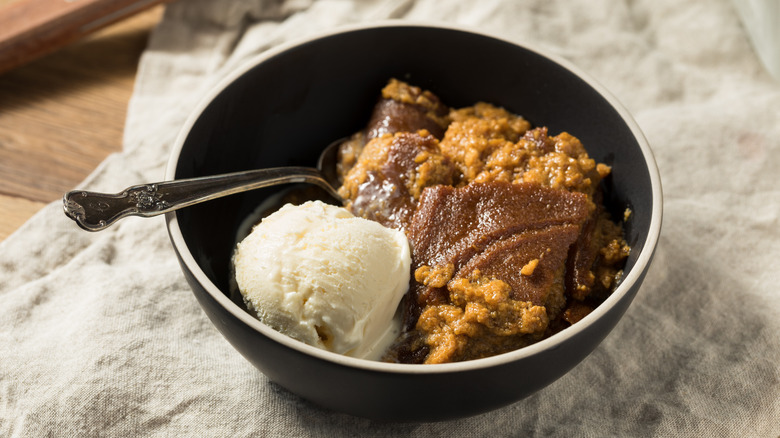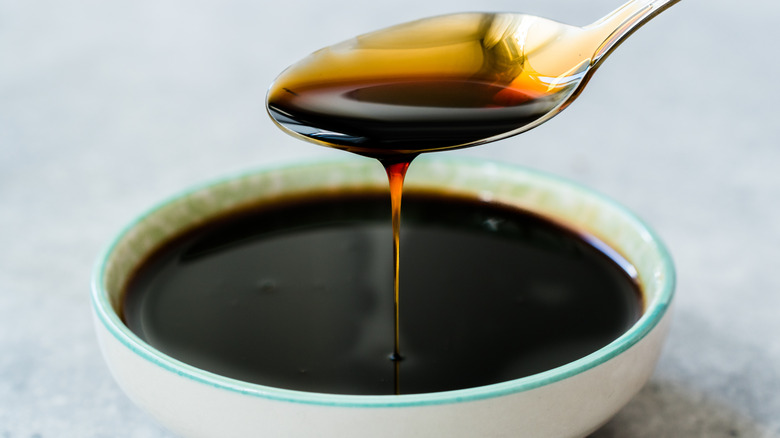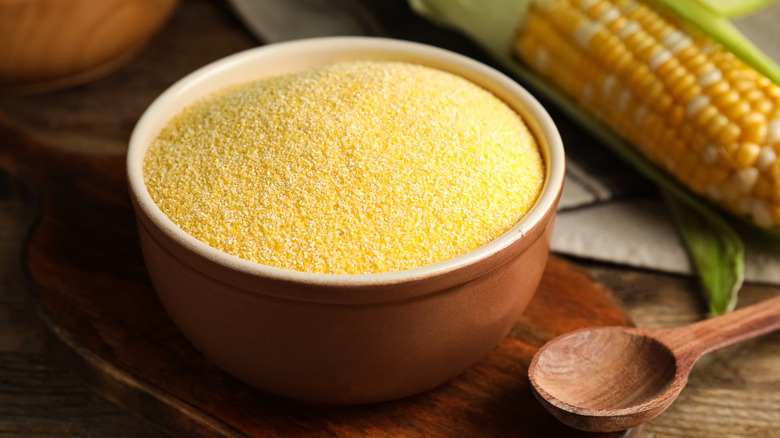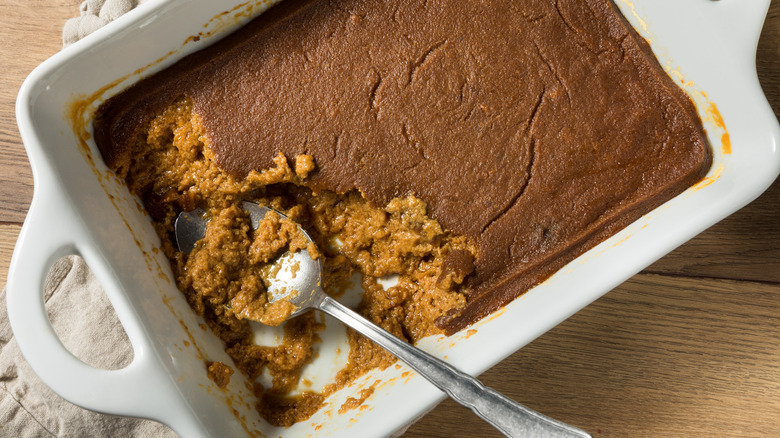The Messy Dessert You'll Only Find In New England
Pudding was first introduced to the New England area by English colonists who occupied the area (via New England Today). If you didn't already know, the English love their pudding — and when we say "pudding," we mean any kind of rustic dessert. Great British Mag says that the British refer to many of their desserts as pudding because the lower classes could only afford pudding-like substances, whereas the wealthy enjoyed things like soufflés and meringues.
The British, therefore, have many kinds of pudding, including spotted dick, sticky toffee pudding, rice pudding, and Sussex pond pudding. Delicious. magazine compiled a list of 54 different English puddings that, extensive though it is, says nothing of the many regional or family recipes. Pudding is still a huge part of English cuisine and has been a delicious dessert for centuries, so it makes sense that when the English came to the Americas, they brought this tradition along with them.
The history of Indian Pudding
The colonists had a problem with pudding in New England because they no longer had access to the ingredients they had in Europe. Sure, they brought the idea of pudding and even their recipes, including hasty pudding, which was made with flour, milk, and sugar. But according to The Takeout, even the grains used for flour were not grown plentifully in the Northeast at the time, so the colonizers had to make do with the grain native to the land: corn. They called the resulting corn flour Indian meal and mixed it with molasses in place of refined sugar, dubbing the revised concoction Indian Pudding.
New England Today says that the pudding was slowly baked until golden brown and was so popular as a sweet and savory side dish that the recipe began appearing in cookbooks as early as the 1700s. Today, Indian and hasty puddings are primarily served as a dessert and incorporate butter, cinnamon, ginger, vanilla, and eggs to create a richer and tastier treat. It is also often served with a dollop of whipped cream or vanilla ice cream to cut through the deep flavor of the molasses.
Indian Pudding's ingredients
One of the ingredients that make Indian pudding distinct from traditional hasty pudding is the use of cornmeal. Cornmeal had existed in the Americas long before European immigrants landed on its shores. GrubAmericana claims that Native Americans had been grinding cornmeal for thousands of years, using it to make flatbread, atole, and chicha. So, when you're enjoying anything made from cornmeal, know that indigenous cuisines inspired it. The Nauset and Wampanoag tribes of coastal Massachusetts taught the European settlers how to grow and process corn. When cornmeal is cooked, it thickens and brings a subtly sweet, corn-like flavor to Indian pudding, as it does to other cornmeal-based foods like cornbread and johnnycakes.
Another unique ingredient essential to the creation of authentic Indian pudding is molasses. According to the journal, Agricultural History Society, molasses was an enormous aspect of colonial life because it was cheap and produced in massive quantities. Molasses supported the food market in New England and could be used in everything from animal feed to Indian pudding. Adding molasses to Indian pudding gave the cornmeal mix a dark color and warm flavor that was perfect for warming hungry bellies craving something sweet. Molasses also pairs well with cinnamon and other toasty spices, commonly thrown into the dish today.
For the love of pudding
Indian pudding is considered a traditional New England recipe and is difficult to find outside of the region, but if you do happen to be in the Northeast during the autumn when the oak trees turn a stunning red, orange, and yellow, pull up to a local diner or inn and try some. It goes by many names: Indian Pudding, Indian Mush, Indian Meal, and Heaven and Hell (when topped with ice cream), but it's all the same and even has its national day on November 13 in the United States (via What's Cooking America).
The pudding, which tastes like baked custard, may not look as pretty as a perfectly iced cake or brownie sundae, but it's certainly delicious. Almanac swears it's even better when topped with ice cream which melts into the dish like a makeshift crème anglaise. Indian pudding is commonly baked in the oven for hours before serving, but The Food Channel claims you can also use a slow cooker. Simply stir together cornbread, brown sugar, molasses, dates, eggs, butter, milk, and spices, then throw it into a slow cooker on high for 2-3 hours and serve with your favorite vanilla ice cream.



